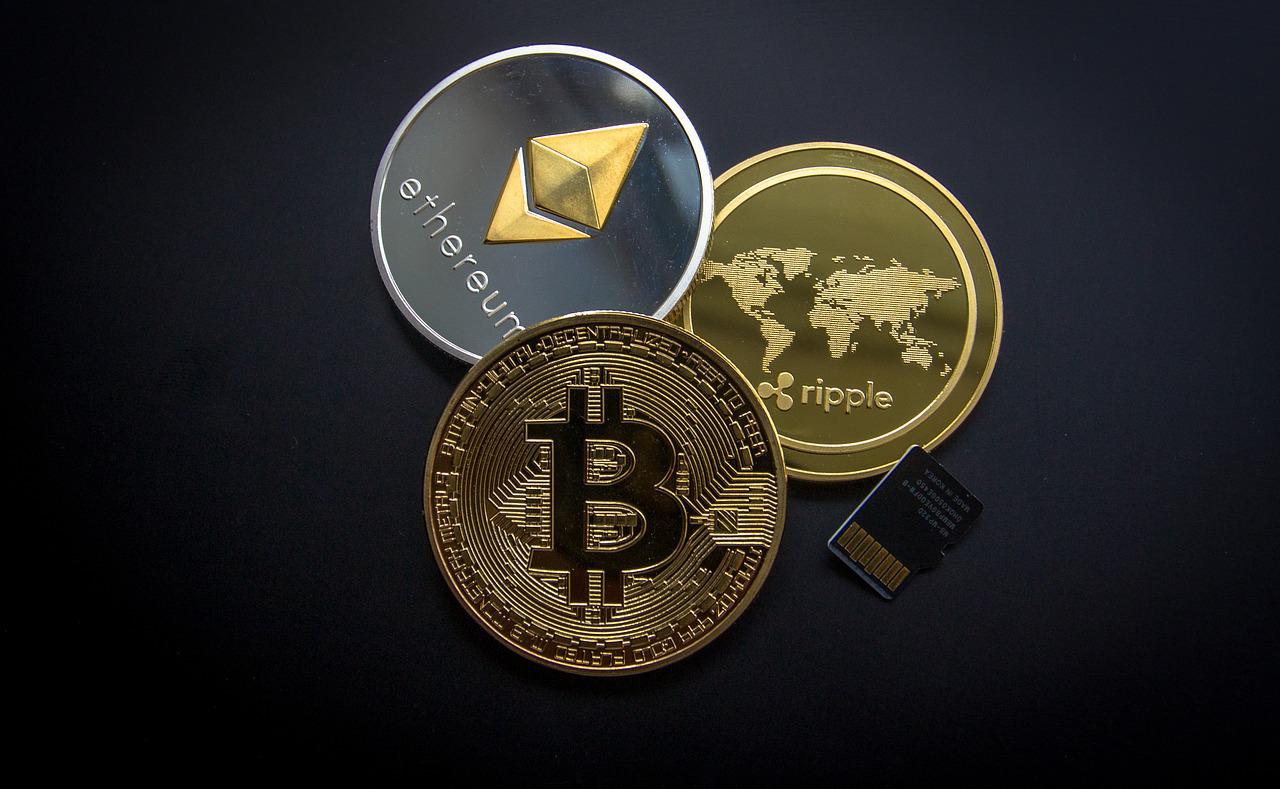Staking is the process by which a crypto network validates transactions on a secure distributed database called a blockchain. Traditionally, each block in the chain requires a significant amount of computation to validate and maintain security. The staking system reduces this by randomly selecting several validators — otherwise known as miners or nodes — to confirm the legitimacy of the block.
To become validators, owners of cryptocurrency must invest a certain amount of coins as their “stake” before they can validate the transactions in the block. Once validated, investors can earn significant returns on their stake.

There are several ways to make money from investing in these proof-of-stake practices. Nevertheless, it’s important to recognize there are also significant risks right alongside those benefits. Crypto traders must perform solid research and gain a better understanding of this strategy before committing to this method of investing.
Advantages of Crypto Staking
One of the stand-out aspects of the crypto market is its thriving community. It’s appropriate, then, that staking crypto can have benefits for both individual traders and the wider community. These benefits include the following aspects.
Higher Profit Margins
Your potential profits from staking crypto may be higher than what you’d earn from simply buying and selling. This is particularly the case if you have a large number of coins to invest in the process. The longer a trader can keep a decent amount of currency in the staking system, the greater return they are likely to see from their investment. The return varies from currency to currency, with trading platforms claiming up to 382,945% annual return on stakes. This may be too good to be true. In the case of Ethereum (ETH), for example, the return is more likely to be around 5%.
For the wider crypto community, the benefit is that staking provides access to various additional forms of passive revenue. Even where traders aren’t able to provide the minimum stake themselves, alternative options are empowering them to claim rewards.
No Need for Specialized Equipment
Validating blocks in the blockchain usually requires a significant amount of equipment and energy resources. One of the key advantages of staking crypto is there is no need to have personal access to specialized equipment.
There are options allowing more technically minded traders to get actively involved with the validation process. But for many traders, staking in crypto is primarily about offering the collateral needed to validate the block. This means there is an inclusive approach to both earning money from currency and making the market more secure.
That said, perhaps the most significant benefit of not needing specialist equipment is the impact on the environment. Traditional proof-of-work systems for validating the blockchain require miners to solve complex mathematical problems to validate a coin. In some cases, the electricity used to mine a single coin is comparable to that of the average U.S. household for more than 70 days. Proof-of-stake processes, on the other hand, don’t require the use of this processing power or equipment. Block legitimacy is confirmed by the consensus of multiple validators. As such, this is a more sustainable practice.
Verify Transactions
One of the key concerns for traders is whether crypto is a secure form of investment. The good news is that crypto staking actively improves the security of the currency. By randomly selecting validators to verify the legitimacy of the transactions on the blockchain, investors themselves are helping to make the ledger more secure. More verified blocks in the ledger make it more difficult for cybercriminals to gain access to and compromise both individual wallets and the currency.
In addition, the process of staking itself is built on the incentive to verify transactions accurately. Investors are offering a significant amount of their own coins before they can engage in validation. If validators engage in unethical and insecure actions, they stand to lose their stake.
Risks of Crypto Staking
As with any investment, staking crypto has some risks involved. Understanding what the hazards are can help you to more responsibly manage your investment while mitigating the risks. While the risks in crypto staking are evolving, the following are among the most prominent at the moment.
Volatile Prices
The stand-out risk with the cryptocurrency market is how volatile the prices can be. These can rise and fall with little warning. This is often due to how vulnerable crypto is to the influence of the outside world. Social media can be particularly problematic in this regard. For instance, Elon Musk tweeted in 2021 that Tesla would no longer accept Bitcoin. The result: not only did Bitcoin’s value drop 12% but Ethereum and Dogecoin also lost 14% and 20% respectively.
This means those staking crypto can experience serious hits when the price drops. Not only does your currency lose value, but you may find the interest you’ve earned from staking fails to cover your losses. A 5% annual percentage yield (APY) on a cryptocurrency is higher than most savings accounts. But if your crypto loses 14% of its value in a year, you lose money.
Lock-up Periods
Most cryptocurrencies will have a minimum period in which the stake must be held in the verification process. This is known as lock-up. It certainly has benefits for everyone involved and makes for stronger crypto overall. Nevertheless, it’s also important to understand how tying your coins up in this way presents risks.
As previously explored, the crypto market is volatile. There can be significant rises and falls. Lock-up prevents you from being agile enough to respond effectively to these situations. You may be unable to sell your coins to take advantage of a sudden peak in prices. Similarly, you can find yourself among the worst victims of a crash because you were unable to trade when the market started to plummet.
In fact, with some trading platforms, you’re unable to unstake immediately even after the lock-up period. A platform’s terms may dictate unstaking will take upwards of seven working days. This is a huge period in a market as volatile as crypto.
How To Stake Cryptocurrency
Despite the risks, crypto staking can still be an attractive investment prospect. There are various ways you can approach this, including the following.
Use an Exchange
Validating cryptocurrency is a highly-technical process and carries a significant time commitment to do well. As such, many investors don’t have the time, skills, or interest to engage personally. The good news is that some crypto exchanges provide services where they perform the staking validation on behalf of investors.
The convenience of investing through exchanges tends to be attractive to traders. The process is usually straightforward. The exchange will gain access to the specified amount of currency in your wallet and hold it on your behalf. They’ll then find a validator to take care of the proof-of-staking action. Once complete, you’ll gain your transaction fees and interest, less any agreed commission deducted by the exchange.
Join a Pool
The minimum stake can be a hurdle to those who would otherwise be keen to stake crypto. Not to mention that if you’re only able to stake the minimum amount, this limits the potential profits. Staking pools involve multiple traders combining their cryptocurrency assets so everyone can mutually benefit. This doesn’t just mean those with smaller amounts of crypto can gain access to the market. It can also result in pools being able to collectively stake more and see greater returns.
As opposed to staking through an exchange, this isn’t a passive form of investing. A specialist company will usually manage the pool and hold the collected currency in a single wallet. Each member of the pool will then use the wallet and their combined computational power to validate multiple blocks more quickly and efficiently than a single investor could accomplish alone.
Become a Validator
If you have a significant amount of cryptocurrency and some technical knowledge, you can choose to be a validator. This can be a complex process but doesn’t require a huge amount of equipment. You can usually contribute if you have a laptop with at least 20GB of memory on a solid-state drive (SSD) and 4GB of random access memory (RAM). You and your computer will then be used as a node in a validation network to verify the authenticity of transactions in the blockchain.
In addition, you’ll need to have at least the minimum amount of cryptocurrency to stake. The amount you need can vary depending on the crypto you’re focusing on. Once you’ve registered as a validator with the crypto developer, you’ll also need to be randomly selected to perform validations. In return for maintaining the integrity and security of the blockchain, you could receive additional coins from your mining and good interest rates from your stake investment.
Best Coins for Crypto Staking
Not every cryptocurrency allows staking. Some are still utilizing the less sustainable form of validation known as proof-of-work. Among those offering staking, you must perform some research so you can select the coins best suited to your investment needs.
Some of the most popular staking coins include:
- Ethereum;
- Binance Coin;
- Terra LUNA;
- Tezos;
- Polkadot;
- USD Coin.
The best coins for staking are usually those that are relatively limited in supply, as this can represent a more stable currency. Not to mention the demand tends to be quite high. You should also focus on what the crypto is being used for, as its applications can impact the potential demand.
Choosing The Right Exchange for Crypto Staking
It is critical to make an informed choice about which crypto exchange you can trust with your investment. Consider how each exchange helps you make the most of the advantages of staking while navigating the risks. This could include reviewing the interest rates and rewards offered. Look at reviews from other traders to better understand their experiences and whether the exchange selects reliable validators. You should certainly assess the unstaking periods each exchange requires in the event you need to urgently withdraw. As with any investment, there is no guarantee of success in staking crypto. But with a strategic and mindful approach, there is potential for both passive and active income.




